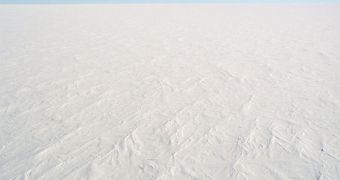Finding extraterrestrial intelligence has been one of humankind's most long-standing dreams, dating apparently several thousands of years back, when various figures resembling modern astronauts were drawn on pyramid and temple walls by priests or artists. In modern times, telescopes have been believed to be the essential tool needed in order to start looking for life on other planets, and have been extensively used for that very purpose for many years. Now, astronomers believe that they might have discovered a better way of scanning the most remote exoplanets, in search of extraterrestrial life.
What inspired the new technique were our own planet's ice ages. During that time, the light emitted by our planet towards other stars would have been brighter, on account of the fact that the ice covered most of the land mass and it reflected the sunlight almost completely. But, at the same time, vegetation lived under the ice, covered in hundreds of feet of snow. This vegetation apparently gives out a specific infrared signature, known as vegetation red edge, or VRE. This stands out amidst other light wavelengths, and can be easily intercepted by people who know the difference between infrared, normal, and ultraviolet light.
The reason why plants on Earth are visible from the Moon on a specific wavelength is that vegetation absorbs a small portion of the light spectrum, where the most energy from the Sun is located. They use this energy to convert carbon into oxygen, and, in turn, emit infrared radiation. Why they do this is still unknown, but some biologists argue that it has something to do with preventing overheating.
According to a new paper published in the International Journal of Astrobiology and led by Luc Arnold, a researcher at the Observatory of Haute Provence, in France, Earth has been constantly a VRE signature for many millennia, which may come in handy if aliens happen to drive by our solar system. The radio signals sent from Earth in all directions are very slow, and have thus far traveled only a few thousand light-years, in 3 or 4 decades.
“If we can detect a sharp feature that cannot be attributed to a mineral or a combination of minerals, it might be a sign of life. I think our paper shows that if continents on an Earth-like planet have vegetation, that should remain visible even during a colder than average climate,” Arnold says. The Terrestrial Planet Finder, a new telescope that is currently in its design phase, may fit within the 6-meter range, which the observer Arnold envisions to need in order to successfully scout the horizons for such faint signals. Incidentally, a future telescope should have the possibility to maintain an exposure time of 2 to 4 weeks.

 14 DAY TRIAL //
14 DAY TRIAL //